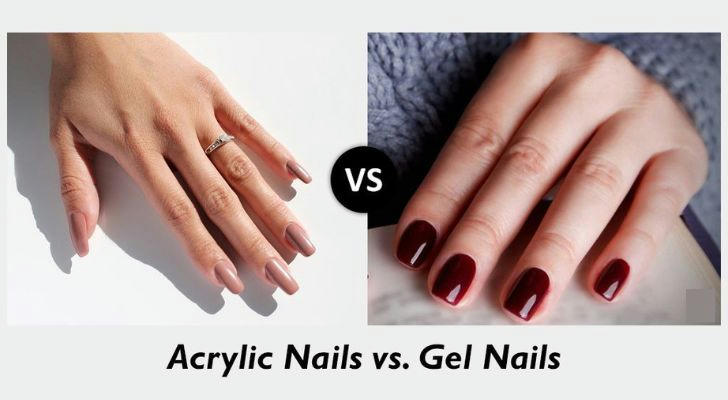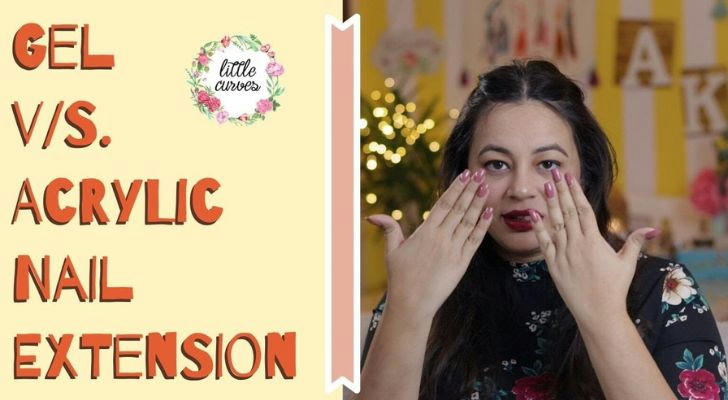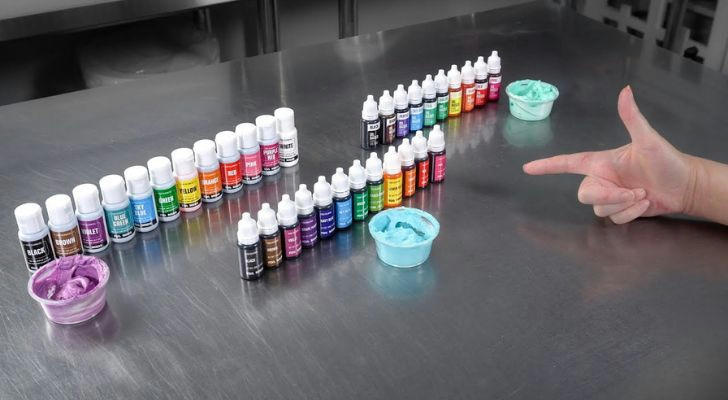Acrylic vs. Gel vs. Dip: What's the Difference?
This article delves into the differences between acrylic, gel, and dip nails, highlighting their pros and cons, to help individuals make an informed decision when choosing the best option for their nails.

1. Acrylic Nails: The Classic Choice
Acrylic nails are perhaps the most well-known and widely used option for nail enhancements. They’ve been a staple in the beauty industry for decades. Acrylic nails are typically made from a combination of a liquid monomer and a powder polymer that hardens into a durable, strong nail surface.
Application Process
The application of acrylic nails involves a few key steps:
Preparation: The natural nails are first cleaned and prepped. This includes filing the nails, pushing back cuticles, and sometimes applying a dehydrator or primer to ensure proper adhesion.
Mixing: A small amount of monomer liquid is mixed with polymer powder to create a paste-like substance.
Shaping: This paste is applied to the natural nail or nail tips, then shaped and sculpted using a brush.
Curing: Acrylic nails do not require UV light for curing. The paste air-dries and hardens naturally.
Advantages of Acrylic Nails
Durability: Acrylic nails are highly durable and resistant to chips or breaks, making them an excellent option for those who need long-lasting nails.
Customizability: They are highly versatile in terms of length, shape, and design. Acrylics can be sculpted into any desired form, whether short or long.
Strength: Acrylic nails are known for their strength. They are ideal for individuals who tend to have weak or brittle nails.
Disadvantages of Acrylic Nails
Harsh Removal: Acrylic nails can be challenging to remove without damaging the natural nail. The removal process usually requires soaking the nails in acetone or filing them down.
Chemical Scent: The monomer liquid used in the acrylic process can sometimes have a strong, unpleasant odor.
Thick Appearance: Acrylic nails can sometimes appear thicker than other nail enhancements, which may not suit those who prefer a more natural look.
2. Gel Nails: The Glossy Alternative
Gel nails offer a smooth and shiny finish that is often preferred by those who want a more natural look. Unlike acrylics, gel nails are made from a pre-mixed gel formula that is applied to the natural nail and hardened using UV or LED light.
Application Process
Gel nails require a few steps to achieve the perfect finish:
Preparation: Just like acrylic nails, the natural nails are cleaned and prepped to remove any oils or dirt.
Gel Application: A base coat of gel is applied first, followed by one or two layers of colored gel. Each layer is cured under a UV or LED light to harden it.
Finishing Touches: After curing, a top coat of gel is applied to seal the design, followed by another round of curing.

Advantages of Gel Nails
Natural Appearance: Gel nails typically look more natural compared to acrylic nails because they are thinner and have a more flexible finish. They also provide a glossy finish that many people find aesthetically pleasing.
Flexibility: Gel nails are less prone to cracking or chipping, and they offer a flexible texture that makes them more comfortable for many users.
Quicker Drying: Gel nails cure quickly under UV or LED light, allowing for a faster application process compared to traditional nail polish.
Disadvantages of Gel Nails
Shorter Lifespan: Gel nails, while durable, tend to last a bit shorter than acrylic nails. Depending on the individual’s lifestyle, gel nails may need more frequent touch-ups.
Potential for Damage: While less harsh than acrylic nails, the removal of gel nails can still potentially cause damage to the natural nail, especially if done improperly.
UV Exposure: The need for UV light during the curing process raises some concerns about prolonged UV exposure. However, the risk is considered minimal compared to other UV-related activities like sunbathing.
3. Dip Powder Nails: The Modern Trend
Dip powder nails are a newer innovation in the nail industry that has gained significant popularity in recent years. This method involves dipping the nails into a pigmented powder that is sealed with a bonding solution. The result is a strong, durable finish similar to both acrylic and gel nails, but without the need for UV light.
Application Process
Dip nails are applied using a slightly different process:
Preparation: As with acrylic and gel nails, the natural nails are cleaned and prepped.
Base Coat: A base coat is applied to the nails, and then the nails are dipped into the powder. This process is repeated with additional layers of powder until the desired thickness is achieved.
Sealing: A top coat is applied to seal the design, and the nails are allowed to dry.

Advantages of Dip Powder Nails
Long-lasting: Dip powder nails are known for their durability, often lasting up to three weeks without chipping or lifting.
Less Odor: Unlike acrylic nails, dip powder nails do not require a strong-smelling liquid monomer, making them a more pleasant experience for both the technician and the wearer.
No UV Light Needed: Dip nails do not require UV light for curing, making them a quicker and safer option compared to gel nails.
Stronger than Gel: Dip powder nails tend to be stronger than gel nails and are less likely to break or chip, making them ideal for individuals who need nails that can withstand a bit more wear and tear.
Disadvantages of Dip Powder Nails
Thickness: Dip powder nails can sometimes be thicker than both acrylic and gel nails, which may not be ideal for those seeking a more natural look.
Difficult Removal: Removing dip powder nails typically requires soaking in acetone, which can take longer than removing gel nails and may cause some damage to the natural nail if not done carefully.
Price: Dip powder nails can
